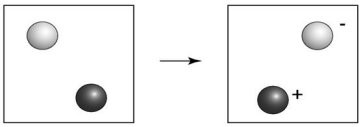What is the principle of uniformitarianism, and can it be used to predict the future?
What will be an ideal response?
The principle states that observations of both a process and its result can apply to the interpretation of other, similar results where the process was not observed. In other words, if you can understand the geologic processes that are responsible for materials and features you presently see in nature or in the laboratory, then you can infer that similar materials and features found in ancient rocks and landscapes are the result of these same processes. If uniformitarianism guides interpretation of geologic history, then can it also be used to forecast future events? In a general way, yes, because scientists infer that the same natural processes operating today operated in the past and will operate in the future. This does not mean, however, that scientists can predict exactly when or where a geologic event will occur. For example, geologists can study the behavior of past eruptions of a volcano by observing the resulting lava flows and layers of volcanic ash, and then hypothesize that future eruptions will feature similar behaviors. This application of uniformitarianism does not, however, mean that the time and severity of the next eruption can be forecast far in advance.
You might also like to view...
 In the above diagram, which atom behaves as the oxidizing agent, the lighter colored atom or the darker colored atom?
In the above diagram, which atom behaves as the oxidizing agent, the lighter colored atom or the darker colored atom?
A. The darker colored atom behaves as the oxidizing agent. B. Neither of the atoms behaves as the oxidizing agent. C. The lighter colored atom behaves as the oxidizing agent. D. Both atoms behave as the oxidizing agent.
The two principal atmospheric atmospheric absorbers of terrestrial radiation are carbon dioxide and ________
water vapor oxygen nitrogen ozone
The annual pattern of global precipitation
A. decreases poleward, inland, and downwind from major mountain ranges. B. decreases poleward, inland, and upwind of major mountain ranges. C. increases poleward, inland, and downwind from major mountain ranges. D. increases poleward, inland, and upwind of major mountain ranges.
When Daylight Saving Time is in effect, clocks "spring forward" one hour in the Spring (Example: 1:00 A.M. becomes 2:00 A.M.) and "fall back" one hour in the Fall (Example: 2:00 A.M. becomes 1:00 A.M.)
Indicate whether the statement is true or false